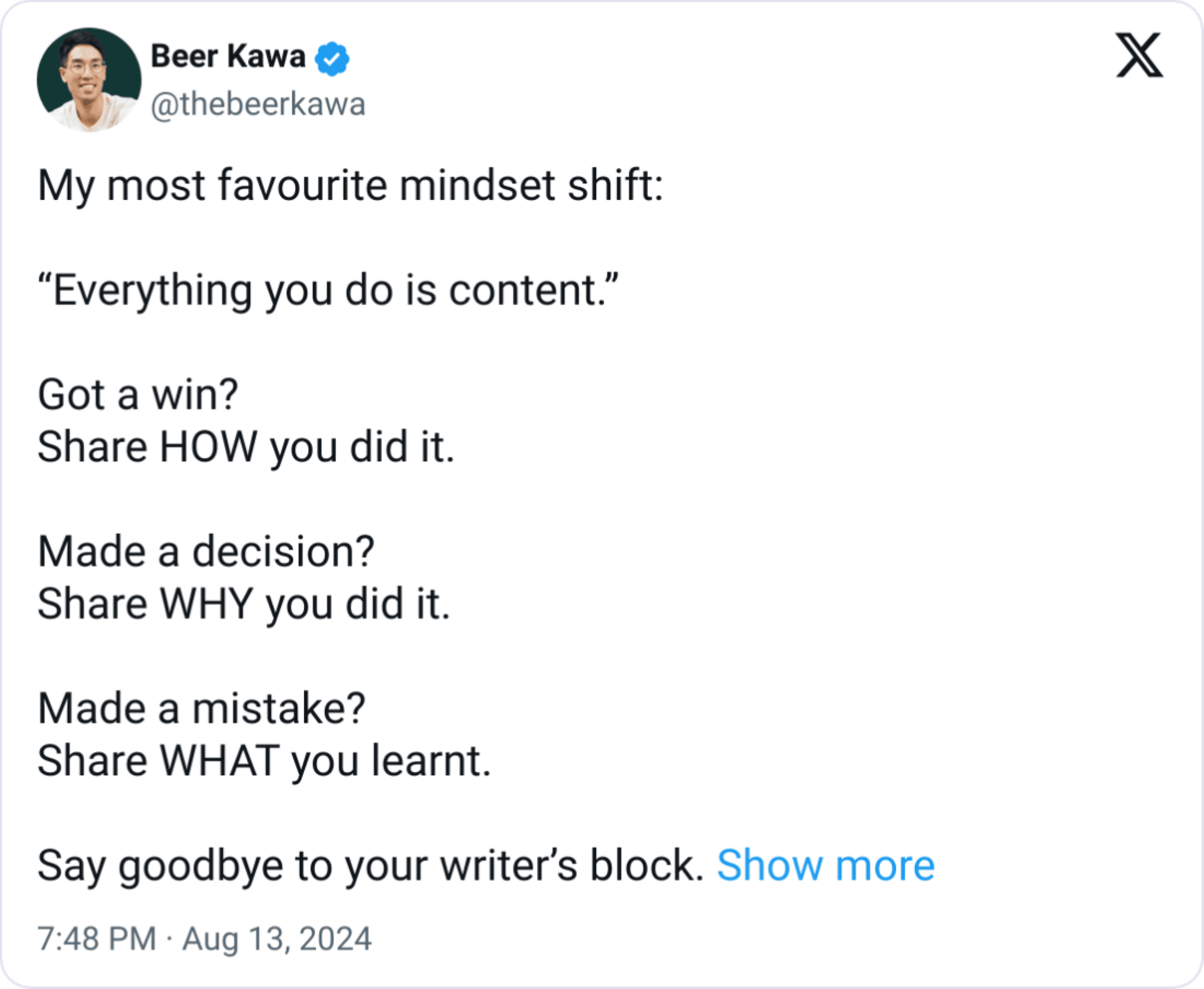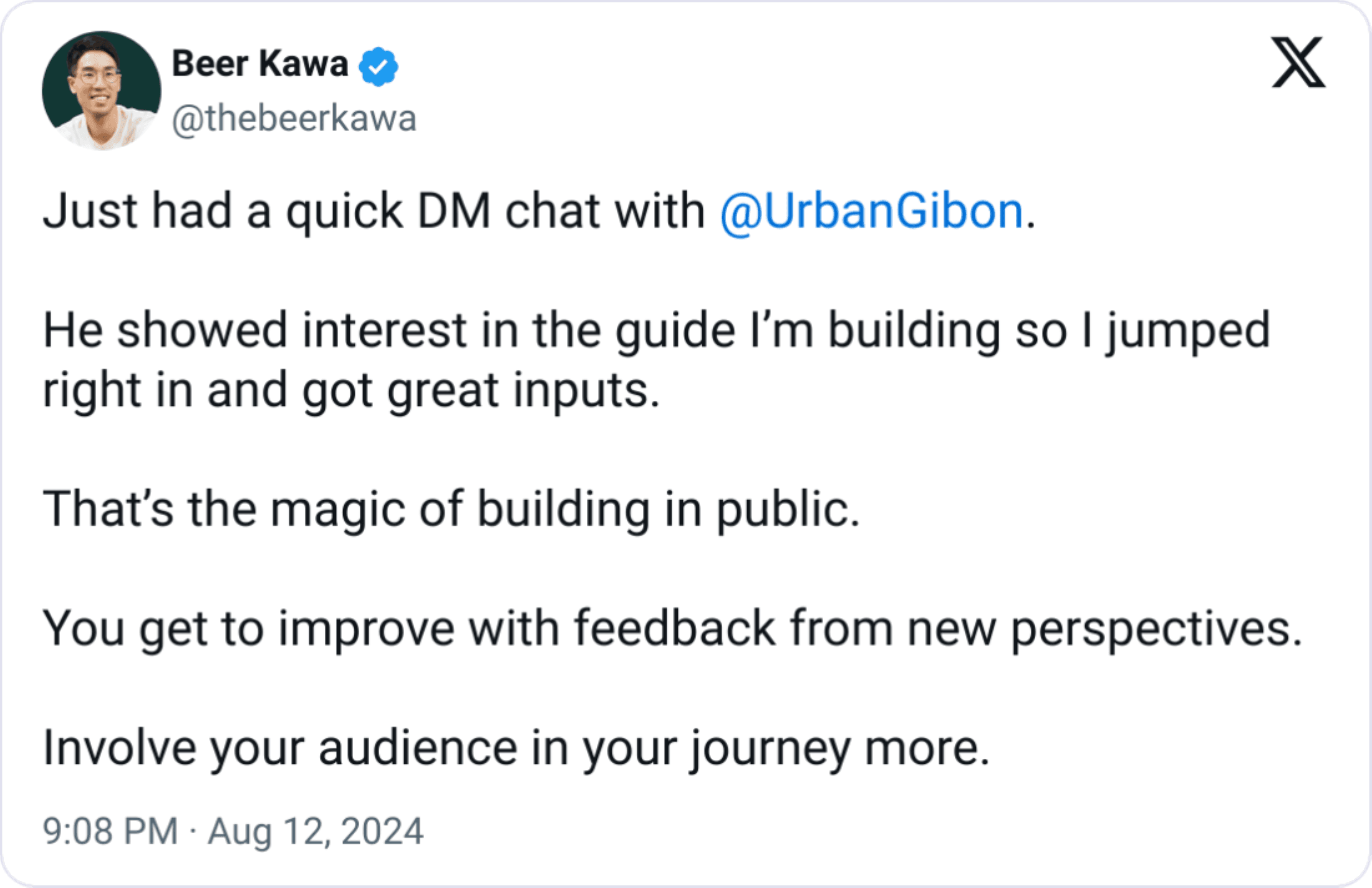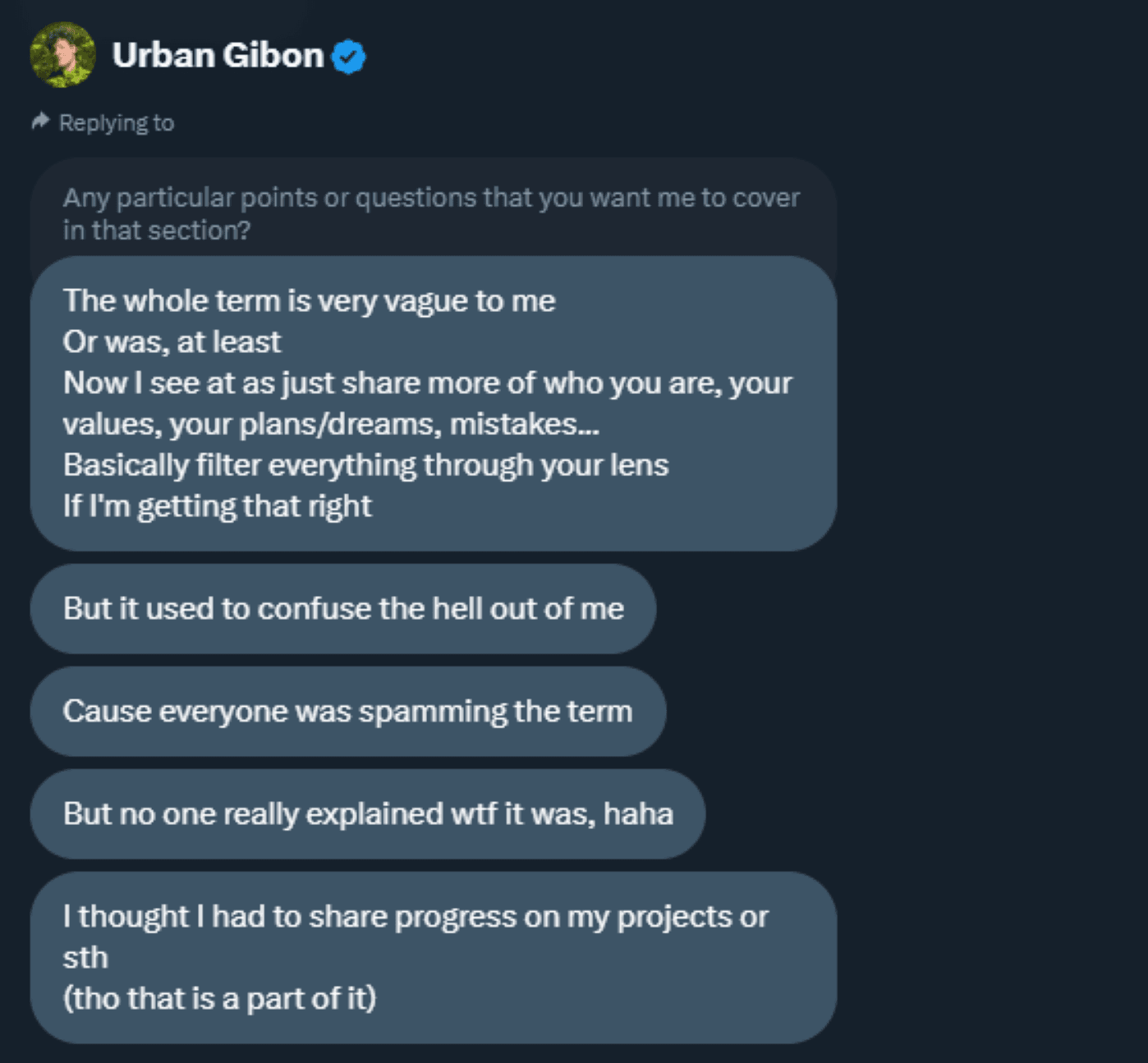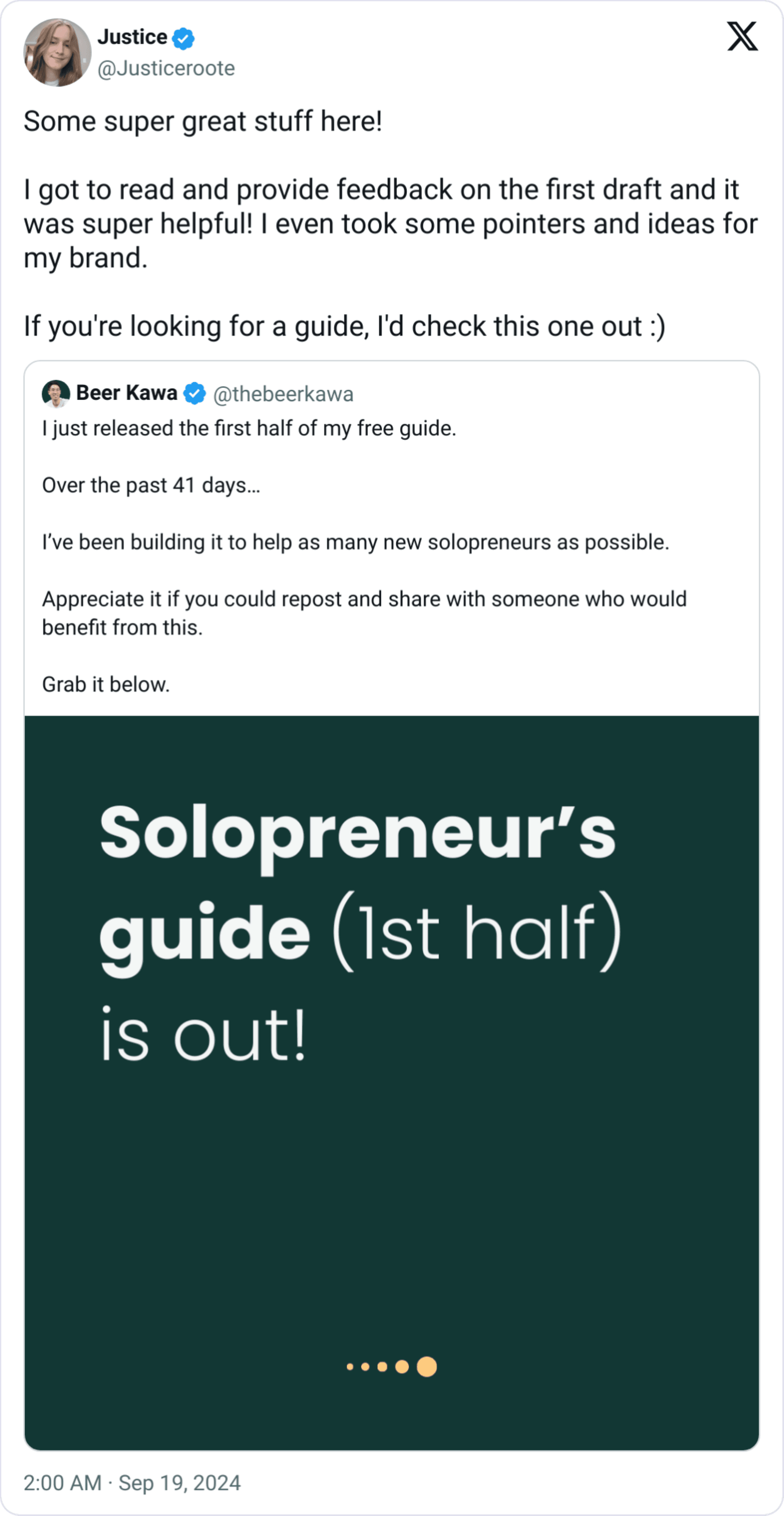Why build in public?
CHAPTERS
Now that you’ve chosen your infoproduct, it’s time to start building.
Most people would default to building everything in the background and only start sharing about it with their audience once it’s completed.
When someone takes this approach, a few things tend to happen from this point:
They get no traction during the launch
They feel like they’ve been wasting time
They start feeling burnt out and quit eventually
And this is the last thing I want you to go through.
Instead, the better approach would be to build in public.
Yes, building everything in background might be more straightforward, but you’ll miss out on many opportunities this approach could bring you along the way.
And I can definitely say that they’re well worth the extra effort.
Here are the five benefits:
1. Never run out of content to share
Earlier I shared about a common pattern I noticed among first-time solopreneurs that makes them feel burnt out and quit eventually.
It’s the constant pressure to deliver valuable content all the time.
I used to fall for this trap before too. But ever since I started to build in public, I didn’t have to worry about this anymore.
That’s because it’s no longer about “What do I post today?” but rather “What have I done today?”.
You can always:
Show your work
Talk about your daily achievement
Share relevant insights for your audience
As long as you keep making progress along your journey, coming up with valuable content regularly should no longer be a problem.

2. Grow a community of supportive fans
Building in public isn’t only about sharing your progress with your audience.
It goes beyond that.
There’s an opportunity for you to do more than just a one-way communication and make them play a key part in your journey instead.
How?
Involve your audience in the development phase of your infoproduct to help shape its direction.
When you do this, they’ll:
Become more invested in what you’re building
Look forward to your successful launch
Support you all the way there
That’s why the build-in-public approach is so much better than posting generic tips or how-tos and hoping to gain a huge number of followers by going viral.
You’re guaranteed to attract people who are actually interested in your work and want to stick around in the long run.
And that was what happened to me.
Most people who volunteered to be early readers for this guide have since become a core part of my community. Plus, they even helped me spread the word when I launched the first part of this guide too.
3. Get early validation
Spending all your time and effort to build something nobody wants is a real pain.
But with the build-in-public approach, this won’t be a problem anymore.
When you share regular updates of what you’re building, you’ll automatically start conversations with those interested in your journey.
This is a great opportunity to involve them in your journey by asking for their initial feedback on your infoproduct.
You’ll be able to validate early on whether your infoproduct can solve their problem and if you’re moving in the right direction.
If not, you can determine how to best adjust based on their feedback so it can be as valuable as possible for them.
This will save you a lot of time down the road by making sure there’s a real demand for what you’re building.
When I shared the structure of this guide, Urban was one of the first to jump in with feedback. He told me this guide would be more useful for him if it dives deeper into the exact ways to share build-in-public content.
At first, I didn’t plan to get into that level of detail.
But I ended up including exactly that because of his feedback. And that’s what you’ll see in the next chapter.


4. Build momentum for launch
The biggest challenge I’ve observed when most people launch an infoproduct is insufficient traction.
Most of the time, the problem isn’t always about the quality (although you shouldn’t compromise this).
But it has a lot to do with basic human nature.
When it comes to using any product, we love to follow the crowd.
We’re heavily influenced by how others think. We love to hear more about their experiences. We simply want someone else to go first.
This is why early testimonials would come in handy before your launch.
When you follow the build-in-public approach, getting feedback from your audience should already be second nature.
But there’s an opportunity for you to go a step further.
If they had a positive experience going through your infoproduct, it’s the perfect time to collect testimonials from them.
After finishing the first part of this guide, I reached out to nine early readers for a feedback round. They gave me a lot of great suggestions and everyone had a great time reading it.
Because of this positive experience, Justice even went on to give me this awesome testimonial that I know would come in handy during my launch.

It’s like a seal of approval your audience has been looking for.
The more positive messages you can share early from beta users, the more momentum you’ll build going into your launch, and the higher traction you’ll get.
5. Stay accountable
By nature of solopreneurship, you’re fully responsible for your own success.
But unlike a typical 9-5 job, there’s no one else to push you to keep making progress. No bosses, no managers, no colleagues.
Only yourself.
The lack of motivation, especially after the initial momentum dies down, is one of the most common struggles I picked up from the interview calls I’ve done with my audience.
One practical way to overcome this is to set yourself a deadline.
So, here’s a great opportunity for you.
Instead of keeping these deadlines to yourself, why don’t you share them with your audience too?
When you announce a deadline to your audience, you’re telling them the finish line for your journey. This instantly makes it more difficult to negotiate your way out since your reputation is now hanging on the line.
It forces you to stay committed and get things done.
And that means progress.
PREVIOUS
Found this guide valuable?
Leave your testimonial here.
